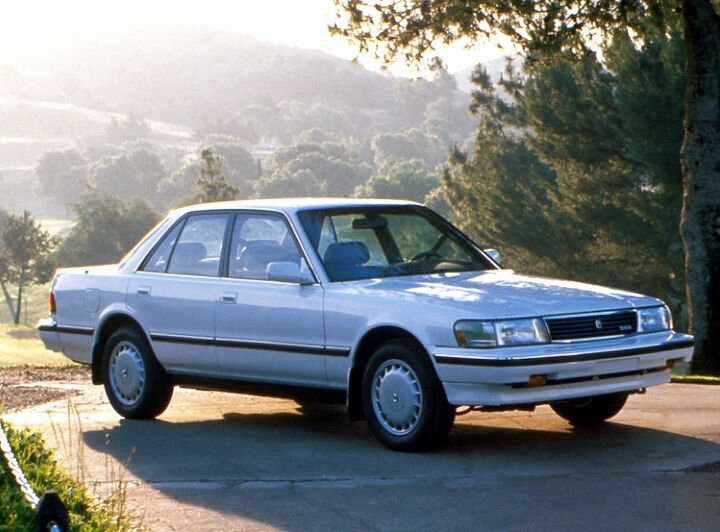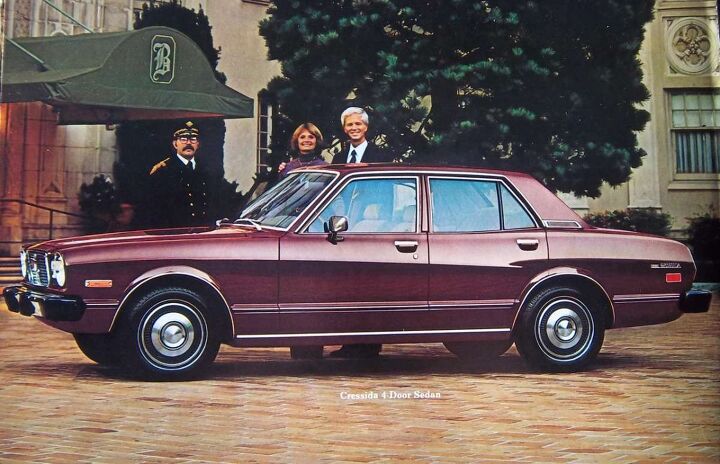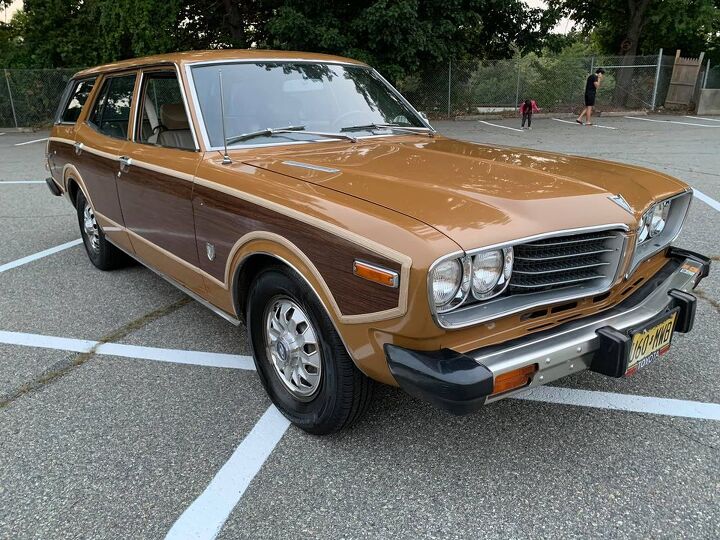#ToyotaMarkII
Rare Rides Icons: The Toyota Cressida Story (Part IV)
We’ve come to the end of our Cressida journey, and the short-lived fourth generation. Conservative and staid as ever, Cressida’s final entry was squeezed out of the lineup from above and below: The crushing weight of Lexus came down upon the late Eighties Cressida shortly after its introduction, while Camry smashed it from below. Put on your Urban Sombrero and let’s go.
Rare Rides Icons: The Toyota Cressida Story (Part III)
Today we find ourselves in the third installment of Toyota Cressida coverage. The first Cressida bowed in 1978 with curvy European styling influences and was a more luxurious take of the Corona Mark II with which North American consumers were already familiar. After a short run from 1978 through 1980, a second-generation Cressida was introduced for ’81. It pursued a much more traditional three-box sedan shape, and looked quite Japanese despite marketing statements about how it was “European looking.”
Under the conservative shape were a number of whiz-bang electronic features, all applied to an interior that was redesigned solely for the American market Cressida. The second Cressida was more successful than the first, and new tech features like electronic fuel injection made it more desirable. After another short model run from 1981 to 1984, it was time for the third generation Cressida. The new one in 1985 was even more conservatively styled than the two that came before it. Say hello to X70.
Rare Rides Icons: The Toyota Cressida Story (Part II)
In Part I of this series we were introduced to Toyota’s Cressida, aka Mark II in almost every other market. A “new” model for the North American market, Cressida picked up where the Corona Mark II left off. The main reason behind the branding change was that Cressida had greater upmarket intentions than the Mark II. When it arrived for 1978 in North America, Cressida wore entirely different styling to its predecessor: Upright, formal shapes replaced the faster-looking curves of the Mark II. The conservative mid-sizer wore a Euro-inspired visage with many Jaguar cues, and the rest of the styling was a mixed bag of American and Japanese flavors.
But the first generation was not long for the world, and after just three model years Toyota released an all-new Cressida. This second edition stuck much closer to Toyota’s typical three-box playbook and added Eighties technology into the bargain. Time for X60.
Rare Rides Icons: The Toyota Cressida Story (Part I)
Our recent Rare Rides Icons coverage of the main quadrant of mid-Eighties Japanese family sedans ( Camry, Accord, Maxima, 626) brought another sedan to mind. Boxy and conservative, it was an upscale offering at a time when Japanese luxury brands simply did not exist. The sedan in question was popular enough for Nissan to target it directly with their Maxima. Presenting the Toyota Cressida, a comfortable luxury experience.
Rare Rides: The 1980 Toyota Corona, a Camry Predecessor
Today’s Corona is the third to appear in the Rare Rides series. We started in early 2020 with a 1968 Corona Coupe and followed up that October with a Mark II wagon. Today’s entrant is from the last time North Americans could buy one.
Rare Rides: A 1975 Toyota Corona Mark II Wagon, Super Brownness Assured
Today’s Corona marks the nameplate’s second entry into the Rare Rides series. And though today’s wagon shares the same name as the prior example, it represents a point of division in Toyota’s lineup.
Come along and learn some more about a rarely seen old wagon.
Rare Rides: A 1974 Toyota Corona 2000 GT
Today’s Rare Ride is a case of forbidden fruit. Though North American consumers could buy something similar, this Rare Ride was never on domestic shores as new.
It’s the Toyota Corona 2000 GT, from 1974.
Junkyard Find: 1971 Toyota Corona Mark II
My first car was a beige ’69 Corona sedan, and so I’m always happy to see a junkyard Corona. In this series prior to today, we’ve seen this ’66 sedan, this ’68 sedan, this ’70 sedan, this ’70 coupe, plus this Corona ad from the February 1969 issue of Playboy. Now I’ve found a Corona Mark II at a Denver yard.























Recent Comments